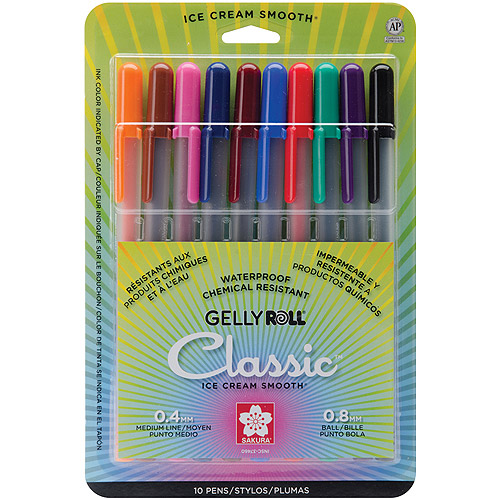Home / Notebooks / Preparation / Pens
A word about pens...
Pens fit for use in science notebooks must stand up to the dangers of coming into contact with different types of liquids including water, rain, coffee, juice, soda (soft drinks), and chemical solvents such as alcohols. Spills happen unexpectedly and often in labs, but especially in labs filled with middle school students! Out in the field, rain and other forms of moisture (e.g., early morning dew, humidity) is always a threat to written records.
On his excellent Maintaining a Laboratory Notebook page, scientist and photographer Colin Purrington offers some time-tested advice regarding what type of instrument(s) to use when writing in science notebooks. His advice can be summarized as follows:
- Do not use pencils. Although graphite is resistant to many solvents, it turns out to be really easy to erase. And, if you read Dr. Merritt’s General Rules & Guidelines, you’ll already know that when recording data mistakes should never be erased.
- Do not use Sharpie (or equivalent) permanent markers. Permanent markers are very good at resisting water spills, but they are easily removed by many common solvents. Permanent markers also tend to bleed through to the underlying page, making them more difficult to read. Sharpie markers also fade over time.
- Do not use fountain pens. Fountain pens usually have water-soluble inks that bled from even minor beverage spills or rain.
- Do not use highlighter pens/markers. Highlighters may be used to highlight words, phrases, and sentences, but they should not be used to write words, phrases, and sentences. Most highlighter ink colors do not contrast enough against white paper [think: yellow], thus making it annoyingly difficult to read. Plus, highlighter ink fades over time.
- Do not use ball point pens. Ball point pens are often terrible at resisting solvents. They also frequently smear, especially when used by left-handed writers.

So, what type of pen should I use when writing my science notebook?
Well, once again, here is Colin Purrington’s good advice:
“The following pens seemed to perform well under the conditions I used:
Pentel Hybrid Gel Roller
Sakura Gelly Roll (this company also makes Pigma Micron pens, which are great)
Sanford Uni-Ball Gel RT
Sanford Uni-Ball Vision
Sanford Uni-Gel RT
I have a fondness for the Gelly Roll in part just because of the name, but they are becoming one of my favorites (I own probably 30 of these pens in various colors and ink types).”
What about FriXion erasable ink pens?
Many of Dr. Merritt’s middle school science students often ask if they can use the Pilot FriXon Erasable Ink pens, but he thinks they ask this mostly because these pens are one of the most-commonly-seen-pens in the most-frequently-visited-stores near his school in Lugano, Switzerland. To this request, he usually points out the fact that these pens are, by design, erasable, and that this trait alone sees them violate his General Rules & Guidelines.

If it’s helpful, know that one of Dr. Merritt’s preferred places in Switzerland to buy good-quality science notebook pens online is on the Galaxus.ch site, which carries the Pentel, Sakura, Pigma Micron, and Uni-Ball brands mentioned above (and no, Dr. M does not receive any money in return for recommending this Swiss e-retail store).